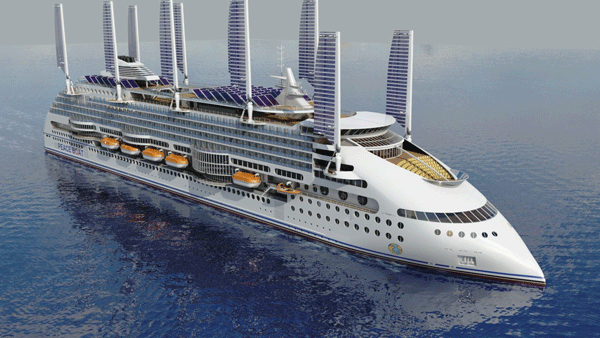
“Green” passenger ship aims to have restorative effect on global environment

Designer’s rendering of the proposed eco-ship with sails extended
Inspired by the streamlined body of the blue whale, the organisation said, the shape of the eco-ship aims to push the boundaries of maritime engineering and green technology.
The vessel’s propulsion system combines sails and solar panels and can use LNG and biofuels. Its biomimetic design elements and technology as well as an onboard garden nourished by recycled wastewater and garbage makes the eco-ship the world’s “greenest” passenger vessel, Peace Boat said, serving as a model for cruise operators worldwide.
The 50,000-tonne, oceangoing eco-ship will offer accommodation for 1,500 passengers. According to the NGO, it will not emit any SOx or NOx and its CO2 emissions will be reduced by 70%.
Furthermore, it will not require the use of generators when in port and is expected to use 50% less energy than conventional cruise ships of similar tonnage. The designer assumes that the ship will produce more potable water, as a by-product of fuel combustion, than it actually needs - and even plans to distribute it to the arid regions it will visit.
Engineers, scientists and experts from the fields of shipbuilding and cutting-edge eco-technology (including renewable energy, biomimicry and architecture as well as water and waste management) recently met for a four-day series of technical discussions in Hamburg, Germany, to refine the design of the eco-ship, which is targeted for completion in 2018.
Peace Boat, which was founded in 1983, believes that travel can be a tool for positive social change. The organisation has special consultative status with the Economic and Social Council of the United Nations and has sailed on over 80 voyages, carrying more than 50,000 people to over 180 ports.
